5 stages of La Vuelta a España 2024 that you shouldn't miss
La Vuelta a España 2024 is presented with an edition of maximum uncertainty in which there is no clear favorite for victory after a Giro d'Italia and Tour de France that have been a true monograph for Tadej Pogacar. The route of this 2024 edition also contributes to this indefiniteness with a focus on medium mountain stages and only a few that could be classified as truly decisive. These are the ones that will probably decide the race.

Where will La Vuelta a España 2024 be decided? These are the most relevant stages
La Vuelta a España 2024 follows the trend of its recent editions, seeking above all to keep the classification undecided until the very end, although, on the other hand, the move has not worked out as desired in the last two editions in which Remco Evenepoel two years ago and the overwhelming dominance of Jumbo-Visma in the last edition almost sealed the race from the start.
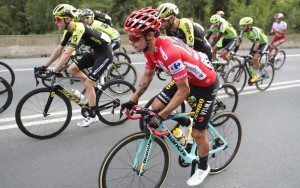
RECOMENDADO

Alcoholic beverages with the fewest calories
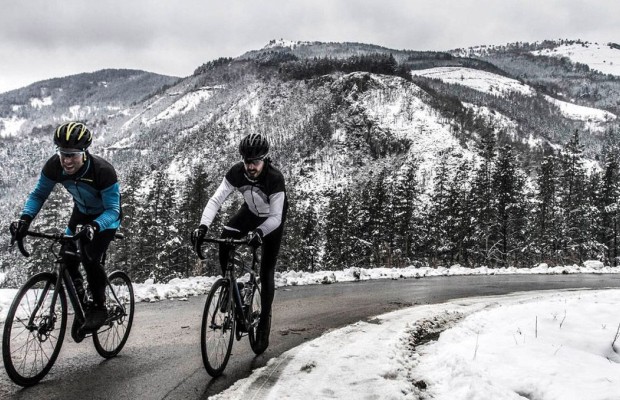
Cycling tips for the Christmas season

What would you do if you won the lottery? This cyclist bought himself a €20,000 bike

The best exercise routine to do at home
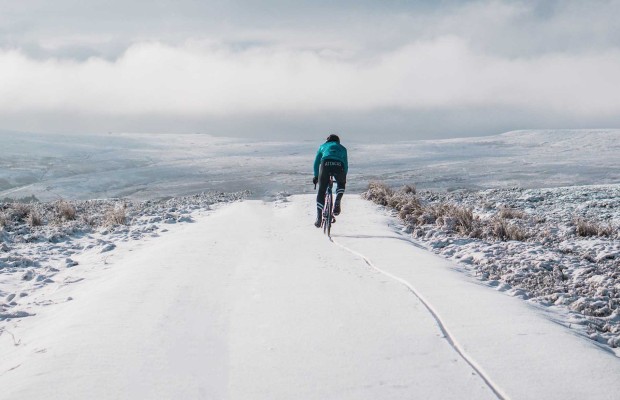
Benefits of training in the cold
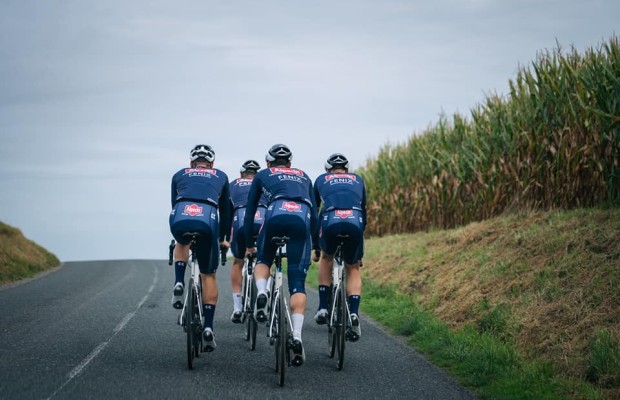
The cyclist's patience: how long, gentle training sessions build your best season
La Vuelta a España 2024 also honors the style that has characterized its routes, with fairly contained distances, with only one stage exceeding 200 km and featuring a lot of medium mountain terrain and more or less single-climb stages to attract a casual cycling audience and prevent significant differences in order to arrive at the final days with the race open. Among the 21 stages, we have chosen the 5 in which we will probably enjoy the most spectacle.
Stage 9: Motril - Granada
As a culmination to the first stage of the race, after the challenging start in Portugal and having already had a first contact with the mountains in the finishes at Pico Villuercas and Sierra de Cazorla, the Sierra Nevada stage presents the first opportunity to establish significant differences in the general classification with the Alto de Hazallanas as the judge of the race.

A 178-kilometer stage that starts on the always uncomfortable roads of the Alpujarra to enter Sierra Nevada through the tough Purche pass. After that, they will face an atypical circuit with a descent to Pinos Genil to start gaining altitude towards Güejar Sierra and from there climb the extremely tough Alto de Hazallanas twice. The novelty in this stage lies, in addition to the double ascent, in not finishing at the top but, after cresting for the second time, the cyclists will face a rapid descent that will lead them to the streets of Granada and which, in the past, has provided us with exciting pursuits.
Stage 10: Ponteareas - Baiona
Although it is not a pure mountain stage or one of the many summit finishes, we wanted to include the first of the Galician stages, which will be held after the rest day. First, because it is held after the rest day and, secondly, because the territory of Rias Baixas always offers tremendously nervous stages and good spectacle.
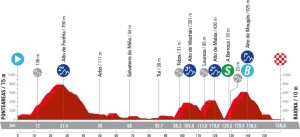
A stage with a violent start with the ascent to Fonfría where the breakaway of the day will likely be defined, and a final third in which the climbs to Vilachán, Mabia, and the Alto de Mougás are linked, the latter classified as a first-category climb and crowned just 20 kilometers from the finish.
Stage 13: Lugo - Puerto de Ancares
The interior of the province of Lugo and the Bierzo region in León are truly challenging territories. If we add the ascent to what may be one of the toughest climbs in Spain, Ancares, we have all the ingredients for a top-notch cycling day.
A 175-kilometer stage, long for what the Vuelta a España 2024 usually offers, with two distinct parts. A first part through the lands of Lugo where the peloton will climb the hills of Campo de Arbre and O Portelo, the latter practically parallel to the well-known O Cebreiro, an emblematic place on the Camino de Santiago that will lead the cyclists into the Leonese lands on the way to Ponferrada.
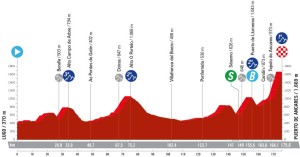
After passing through this city, there is almost only climbing left, during the last 50 kilometers as they enter the Ancares mountain range with the previous ascent to the Puerto de Llumeras and the final climb to the Puerto de Ancares via the Tejedo de Ancares side, a climb that is just as tough as those from the Galician side that the Vuelta a España has previously traversed, always providing great days of racing.
Stage 16: Luanco - Lagos de Covadonga
Either of the two Asturian stages could be in this selection, both the 15th that closes the second week and this 16th that we have chosen simply because it is held after the rest day, with the unpredictability that entails in the performance of the cyclists and, above all, for ascending the most mythical peak of La Vuelta a España: Lagos de Covadonga.
It is also a long day, 181 kilometers, and despite having only three climbs, it hides a lot of tough terrain. In addition, the two ascents before the finish at Lagos de Covadonga are real challenges. First, the Mirador del Fito, a small but tough climb with steep ramps that made even Miguel Indurain surrender, in fact, it was the last climb that the Navarrese rider ascended as a professional before dismounting a few kilometers later.

The second climb of the day was a pleasant surprise in the 2021 Vuelta, in a grueling day marked by rain, Primoz Roglic secured his final victory in that edition after an impressive ride. A formula that La Vuelta a España 2024 will repeat, although this time with only one ascent of this climb before heading towards Lagos de Covadonga to face this always spectacular climb.
Stage 20: Villarcayo - Picón Blanco
We often hear that in Spain, epic high mountain stages like those in the Tour de France or the Giro d'Italia cannot be done. Well, the 20th stage of La Vuelta a España 2021 aims to put an end to that perception with a day that offers an absolutely epic route and high mountain landscapes that are breathtaking.
![]()
A stage that, despite starting and finishing in Burgos, unfolds almost entirely in the deep Cantabrian valleys with ascents to Estacas de Trueba, this one on its easier side, from where the peloton will enter the Valle del Pas and its endless grassy slopes. With the ascent to La Braguía, short but demanding, the cyclists will ride through what is probably one of the most common roads and passes for Cantabrian cyclists among the many they have to choose from.
A change of valley through the Alto del Caracol, another climb of not excessive length but sustained hardness, is remembered by all for the incident involving Alejandro Valverde in the 2008 Vuelta where he lost all his chances when, on a rainy day, he went back to the car for a raincoat and got dropped on the descent of this climb.
![]()
After the descent, they will head back to the province of Burgos through another pass with truly alpine landscapes like the Portillo de Lunada, which will leave them very close to Espinosa de los Monteros where the stage started. They won't finish there as they will once again head towards Cantabrian lands with the climb to the Portillo de la Sía, on its gentler but still demanding side. After cresting, they will face an endless descent that will take them almost to the coast before turning back and climbing the Tornos, a more gradual but never-ending climb. A tough appetizer before the final climb to Picón Blanco, an 8-kilometer climb with ramps that alone are capable of creating significant differences, so one can only imagine what we will see after a day as tough as the one that the 20th stage of La Vuelta a España 2024 holds.